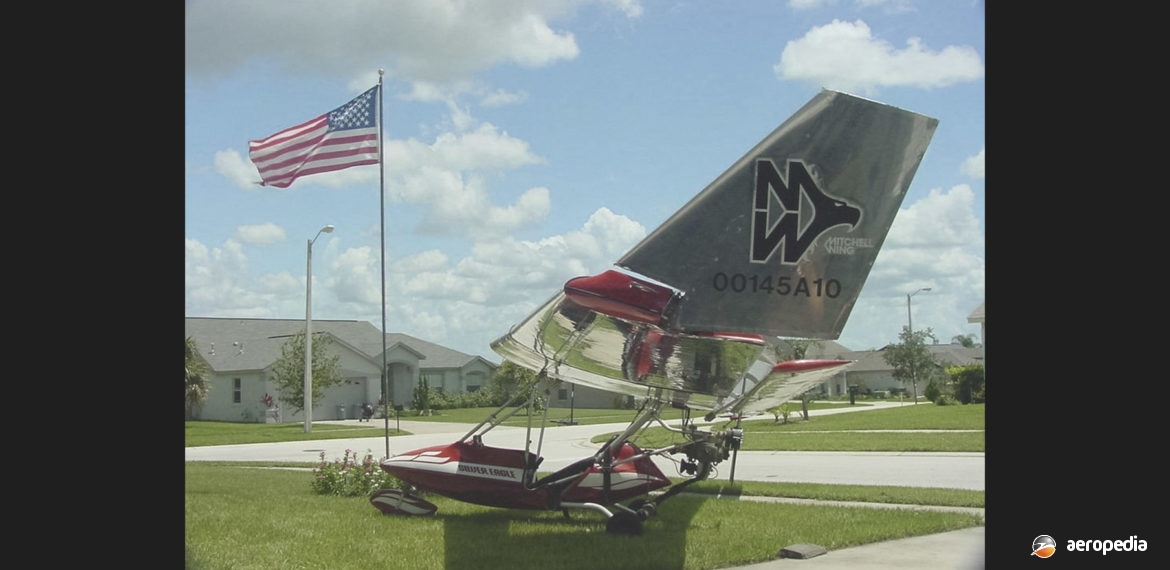Photograph:
A Mitchell Wing Model B-10 at an Air Park in the United States (Ameriplanes)
Country of origin:
United States of America
Description:
Single-seat ultralight sport aircraft
Power Plant:
One 16 kw (22 hp) Zenoah G-25B1 single-cylinder two-stroke air-cooled engine
Specifications:
- Wingspan: 10.36 m (34 ft)
- Length: 2.44 m (8 ft)
- Height: 1.2 m ( 4 ft)
- Wing area: 12.6 m² (136 sq ft)
- Max speed: 105 km/h (65 mph)
- Cruising speed: 88 km/h (55 mph)
- Stalling speed: 40 km/h (25 mph)
- Rate of climb: 183 m/min (600 ft/min)
- Service ceiling: 3,658 m (12,000 ft)
- Range: 483 km (300 miles)
- Max glide ratio: 16:1
- Wing loading: 21 kg/m² (4.4 lb/sq ft)
- Empty weight: 113 kg (250 lb)
- Loaded weight: 249 kg (550 lb)
History:
The B-10 commenced life as a hang glider and was developed into a powered ultralight aircraft with good soaring characteristics. It consists of a flying wing with a tricycle undercarriage. The series was marketed by Ameriplanes Inc of Winterset, Indiana in the US and includes the A-10, B-10 and T-10, the latter being a variant for training purposes. The aircraft was designed to meet US FAR 103 Ultralight Vehicle Rules. It is a tail-less flying wing, the structure of the fuselage being of aluminium tubing. The wing is of birch plywood with a D-cell leading edge, foam ribs and covered with Dacron sailcloth. It can be dismantled quickly for storage or conveyance, the manufacturer providing a trailer for this purpose designed for the machine.
Power plant was the Zenoah G-25 series driving a two-blade wooden fixed-pitch propeller. Other engines in the 15 to 22 kw (20 to 30 hp) range could be installed. Controls were conventional three axis. More than 500 examples have been completed and a number have been built and flown in Australia.

